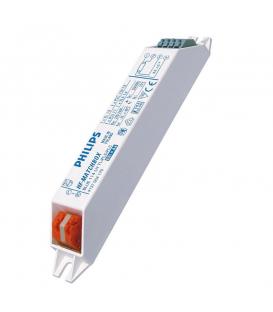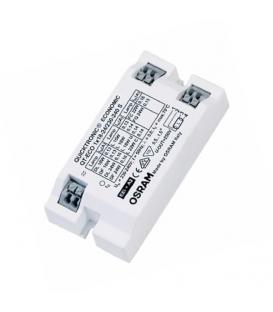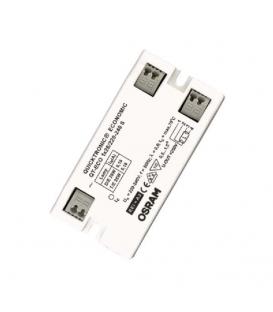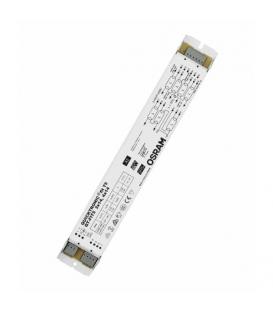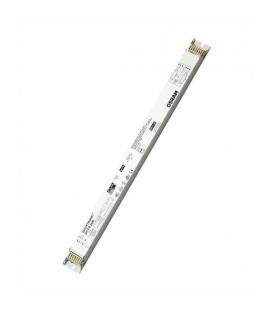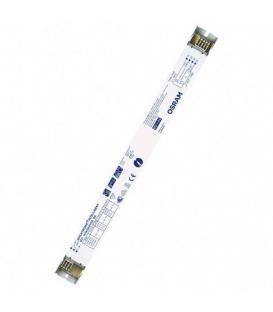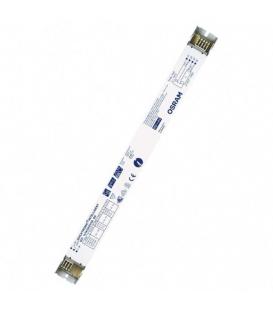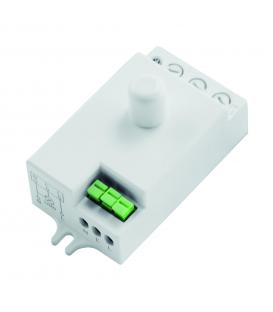Ballasts electronic energy efficient lighting lamp

Electronic ballasts are devices used to regulate and control the operation of gas discharge lamps, such as fluorescent lamps and some types of high-intensity discharge (HID) lamps. Unlike traditional magnetic ballasts, electronic ballasts use solid-state electronic components to provide high-frequency power to the lamp.
An electronic ballast, also known as an electronic control gear (ECG), is a device used to control and regulate the electrical current in fluorescent lamps, compact fluorescent lamps (CFLs), and some types of high-intensity discharge (HID) lamps. It is an energy-efficient alternative to the older magnetic ballasts.
Overall, electronic ballasts have played a significant role in improving the performance, energy efficiency, and user experience of fluorescent and other gas discharge lamps.
ECGs – perfect combination for long-lasting energy-efficient light
Ballasts such as electronic fluorescent ballasts are not only critical to ensure the proper operation of fluorescent lamps, but a quality unit can also result in energy savings while at the same time increasing discharge or fluorescent lamp life.
Here's a detailed description and explanation of electronic ballasts for lamps:
Components and Operation:
- Power Conversion: Electronic ballasts convert the incoming AC voltage from the power source (usually mains electricity) into high-frequency AC voltage. This high-frequency AC voltage is then transformed to a suitable voltage for the lamp.
- Frequency Generation: The ballast generates a high-frequency current (usually in the range of 20 kHz to 100 kHz) using components such as transistors and capacitors. This high-frequency operation eliminates the flicker often associated with fluorescent lamps powered by magnetic ballasts.
- Ignition and Starting: The electronic ballast provides a high-voltage pulse to initiate the ionization process within the lamp at startup. This is crucial for fluorescent lamps, which require a brief surge of high voltage to start conducting electricity.
- Steady-State Operation: Once the lamp is ignited, the electronic ballast regulates the current flowing through the lamp to maintain a stable and consistent light output. This ensures that the lamp operates efficiently and produces a steady illumination.
Advantages of Electronic Ballasts:
- Energy Efficiency: Electronic ballasts are more energy-efficient compared to magnetic ballasts. They use advanced control techniques to optimize lamp performance, resulting in lower energy consumption and reduced operating costs.
- Reduced Flicker and Noise: The high-frequency operation of electronic ballasts eliminates noticeable flicker in the lamp's output. Additionally, electronic ballasts generate less audible noise compared to magnetic ballasts, contributing to a quieter and more comfortable lighting environment.
- Improved Lamp Life: Electronic ballasts can extend the lifespan of lamps by providing consistent current regulation. This helps prevent premature lamp failure and reduces the need for frequent replacements.
- Dimming Capabilities: Many electronic ballasts have built-in dimming features, allowing for easy adjustment of light output. This feature is useful for creating different lighting levels and adapting to various tasks or ambiance requirements.
- Compact Design: Electronic ballasts are typically smaller and lighter than magnetic ballasts, making them easier to integrate into fixtures and lighting systems.
Applications:
Electronic ballasts are commonly used in various lighting applications, including:
- Fluorescent Lamps: Electronic ballasts are extensively used with fluorescent lamps in residential, commercial, and industrial settings. They provide efficient and flicker-free operation.
- Compact Fluorescent Lamps (CFLs): CFLs, which are energy-efficient alternatives to incandescent bulbs, often incorporate electronic ballasts.
- High-Intensity Discharge (HID) Lamps: Certain types of HID lamps, such as metal halide lamps, can benefit from the improved efficiency and control offered by electronic ballasts.
Overall, electronic ballasts have revolutionized the lighting industry by providing a more energy-efficient, reliable, and versatile solution for powering gas discharge lamps.
Browse our "Ballasts, Electronic" collection
Electronic Ballasts - Energy-Efficient Lighting Lamp
- 15,82 €Illuminate your space with the ELXc 118.243 electronic ballast for T8 lamps. Efficiently power up your lighting setup...
- 28,59 €Illuminate your space with the ELXc 149.858 electronic ballast for T5 lamps. Efficiently power up your lighting setup...
- 18,23 €Discover the ELXc 226.882 electronic ballast for efficient lighting with 2x26W TC-DEL TEL bulbs. Enhance your space...
- 61,12 €Upgrade your lighting with the ELXc 280.538 electronic ballast for TC-L T5 bulbs. Efficiently power up to 2x55W or...
- 20,18 €Upgrade your lighting with the ELXs 116.900 electronic ballast for T5 and T8 lamps. Efficiently power up to 4 lamps...
- 18,31 €Upgrade your lighting with ELXs 116.903 electronic ballast for T5 and T8 lamps. Efficiently power up your space with...
- 18,92 €Discover the ELXs 121.901 electronic ballast for efficient lighting with 1x13 21W TC-DEL TEL T5 bulbs. Illuminate...
- 14,56 €Discover the efficiency and power of ELXs 121.904 electronic ballast for T5 lamps. Maximize energy savings with this...
- 14,55 €Illuminate your space with the ELXs 124.902 electronic ballast for T5, T8, and R5 lamps. Efficiently power up to 14...
- 18,92 €Upgrade your lighting with the ELXs 124.905 electronic ballast for T5, T8, and R5 bulbs. Efficiently power your...
- 18,92 €Discover the ELXs 126.907 Electronic Ballast for TC-F L and TC-DEL TEL bulbs. Efficiently power your lighting needs...
- 27,75 €Discover the HF B 236 TL-D EII 220V electronic ballast for efficient lighting. Upgrade your setup with this...
- 14,26 €Discover the HF M blue 109 LH TL PL-S ballast for efficient lighting. Upgrade to electronic technology for optimal...
- 17,08 €Discover the HF M blue 114 LH TL PL S electronic ballast for PL-C 230 240V. Efficient, reliable, and perfect for your...
- 15,59 €Discover the HF M blue 121 LH TL5 ballast for efficient lighting. Upgrade to this electronic solution for reliable...
- 19,03 €Discover the HF M blue 124 LH TL electronic ballast for PL-L 230 240V. Efficiently power your lighting with this...
- 14,26 €Discover the HF M red 109 SH TL PL-S ballast for efficient lighting. Upgrade to electronic technology for reliable...
- 16,72 €Discover the HF M red 118 electronic ballast for PL-C and PL-T lamps. Efficiently power your lighting with this...
- 17,26 €Discover the HF M red 124 SH TL electronic ballast for PL-L lamps. Efficiently power your lighting with this...
- 22,38 €Discover the HF P 114 35 TL5 HE III 220V electronic ballast - efficient, reliable, and energy-saving. Upgrade your...
- 22,78 €Discover the power of the HF P 124 39 TL5 HO III 220V electronic ballast. Maximize efficiency and brightness with...
- 17,68 €Illuminate your space with the HF P 136 TL-D III 220V electronic ballast. Efficiently power up your lighting for a...
- 21,42 €Discover the HF P 149 TL5 HO III 220V electronic ballast for efficient lighting. Illuminate your space with this...
- 17,68 €Illuminate your space with the HF P 158 TL-D III 220V electronic ballast. Efficiently power up your lighting for a...
- 20,23 €Illuminate your space with the HF P 170 TL-D EII 220V electronic ballast. Efficiently power up your lighting for a...
- 30,03 €Discover the HF P 180 TL5 PL-L 220V electronic ballast for efficient lighting. Maximize energy savings and brightness...
- 37,61 €Illuminate your space with the HF P 236 TL-D III 220V electronic ballast. Efficiently power up your lighting for a...
- 32,61 €Upgrade your lighting with the HF Pi 1 electronic ballast for TL5 lamps. Efficient and reliable, this 220V ballast...
- 12,45 €Upgrade your lighting with the QT ECO 1x18 electronic ballast. Efficiently power your 220V S bulbs for brighter,...
- 24,59 €Upgrade your lighting with the QT ECO 1x18 24 220V S electronic ballast. Efficiently power your bulbs for a brighter...
- 15,59 €Upgrade your lighting with the QT ECO 1x26 220V S electronic ballast. Efficiently power your bulbs for brighter,...
- 17,89 €Upgrade your lighting with the QT ECO 2x5 electronic ballast for efficient illumination. Save energy and enjoy...
- 14,74 €Illuminate your space with the QT FIT8 1x18W 220V Quicktronic electronic ballast. Efficiently power your lighting for...
- 20,55 €Illuminate your space with the QT FIT8 1x36W 220V Quicktronic electronic ballast. Efficiently power your lighting for...
- 14,74 €Upgrade your lighting with the QT FIT8 1x58 70W 220V Quicktronic electronic ballast. Experience efficient, reliable...
- 16,28 €Enhance your lighting with QT FIT8 2x18W 220V Quicktronic electronic ballasts. Achieve optimal brightness and energy...
- 23,62 €Upgrade your lighting with the QT FIT8 2x58 70W 220V Quicktronic electronic ballast. Experience efficient, reliable...
- 33,08 €Enhance your lighting with QT FIT8 3x18W 4x18W Quicktronic Ballasts. Efficiently power up to four lamps at once for...
- 14,63 €Upgrade your lighting with the QT FIT 5 8 electronic ballast - efficient, reliable, and perfect for your home or...
- 22,21 €Illuminate your space with the QT FIT5 1x14 35W 220V Quicktronic electronic ballast. Efficiently power your lighting...
- 21,71 €Upgrade your lighting with the QT FIT5 2x14 35W 220V Quicktronic electronic ballast. Efficiently power your fixtures...
- 33,08 €Illuminate your space with the QT FIT5 3x14W 4x14W 220V Quicktronic electronic ballasts. Efficiently power up to four...
- 42,10 €Upgrade your lighting with the QT FQ 2X80W 220V Quicktronic electronic ballast. Experience efficient, reliable power...
- 27,95 €Enhance your lighting with the QT M 2X26 42W Quicktronic Multiwatt electronic ballast. Efficiently power your bulbs...
- 25,19 €Upgrade your lighting with the QT t e 1x14 17W electronic ballast - efficient, reliable power for your fluorescent...
- 26,81 €Upgrade your lighting with the QTi 1x28 54 35 49W GII electronic ballast. Experience intelligent control and energy...
- 36,09 €Upgrade your lighting with the QTi 2x14 24 21 39W GII electronic ballast. Experience intelligent control and energy...
- 30,71 €Upgrade your lighting with the QTi 2x28 electronic ballast - efficient, intelligent, and reliable. Illuminate your...














